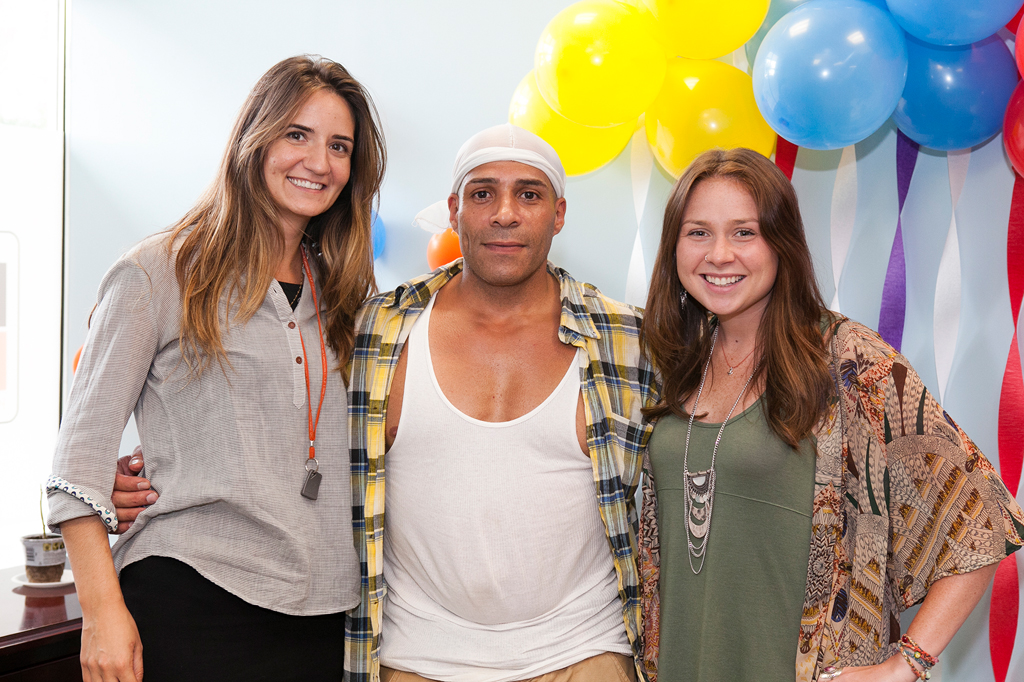NEW YORK — Three years have passed since I first went to jail. I often think back to the bumpy, almost dangerous, ride over the bridge to Rikers Island. My classmates and I would hold onto our belongings and the handles of the van as we swerved to avoid potholes and bumps in the road, crossing from freedom to a caged environment. After the first few trips, I found myself focusing less on the obstacles of the road and more on the emotions bumping around in my head: the usual nerves to face a corrections officer and be patted down, fear and sadness about the future, but mostly excitement to see my classmates.
I would soon learn that for my Rikers classmates the road to a successful reentry into society would be even bumpier, filled with obstacles and barriers to finding employment, housing and rehabilitative services.
Fast-forward three years; with the memories of Rikers Island still replaying in my mind, I sat in a classroom 30 miles away in Jersey City, New Jersey. A former gang member debates with his classmates who I look more like: Casper the ghost or Flo from the Progressive Auto commercials. “If my opinion matters, I don’t think I look like either of those characters,” I add as the class erupts into laughter, confirming that my opinion on this topic did not matter. It was my first few months teaching workshops on job readiness skills at Jersey City Employment and Training Program and I was trying to lead an activity on interview skills.
Luckily for me, someone else in the room eager to prepare for his first job interview brought the class back on topic. He interrupted, “You want to wear a suit so they know you take things seriously and you should always shake the interviewer’s hand.”
I praised him for his insight. To most people, extensive interview preparation is the difference between landing a dream job or staying at a current job. But for my clients, it is the difference between freedom and going back to jail.
The five months I spent on Rikers Island as a college junior planted seeds of knowledge and awareness about mass incarceration in the United States. It opened my eyes to an issue that, depressingly enough, I was not very familiar with. As a college graduate, it could have been easy for me to ignore the glaring issue of the justice system: Fewer than 12 percent of college-educated Americans are incarcerated. Furthermore, as a white woman, I am about three times less likely to be incarcerated than an African-American woman.

Mazzeratti Powell, now an apprentice in the plumbers union, was a client of the job readiness programs, and Kathleen White.
For more information about RE-ENTRY, go to JJIE Resource Hub | RE-ENTRY
If the experiences of my classmates opened my eyes to the fears inmates in American jails had about reentering society, the experience of my clients in Jersey City demonstrated to me just how difficult the journey from reentry to self-sufficiency is in the United States. We are a nation that incarcerates more individuals than any other. With a federal recidivism rate of 49.3 percent and a state recidivism rate of 76.6 percent, the United States has to do better to ensure that all people have a meaningful chance at reentering society after incarceration.
Once an individual is released from jail or prison, the conditions of their release are centered on public safety and surveillance. Their success is measured by how quickly they can secure housing, employment and education. Government-mandated reentry services often prioritize the well-being of the community the former offender is reentering, and the burden is placed on the individual to secure housing and employment. And typically, they must do these things without access to quality behavioral treatment, such as counseling.
True success after incarceration depends on an individual’s experiences inside a correctional facility and the services they receive upon release. I witnessed far too many of my clients leaving the system ill-equipped to find employment, housing and mental health services. Community-based programs, such as the one I taught at in Jersey City, exist to fill gaps in reentry services so more individuals can successfully transition from incarceration to self-sufficiency.
A conversation I had with a student in Jersey City reminded me of the limitations of these programs. One day, after a particularly emotionally and physically taxing afternoon at Jersey City Employment and Training Program, I walked out to Martin Luther King Boulevard to get everyone back into the classroom after their second break that day. On my way back in I began having a conversation with a young man in his mid-20s who had just come home from his most recent prison sentence. All week he was distracting the class, wandering through the hallways and adding seemingly sarcastic questions to our discussions.
When I questioned him about his behavior, he looked at me with genuine confusion and said, “I don’t know, I am trying to learn, they don’t talk about this stuff in jail, can’t I ask questions?” Later that day, I learned that this man had spent more of his life confined than free. He wondered if he would successfully reenter a society he had never really been a part of. That day, it struck me that his trauma ran deep; much deeper than I initially suspected — much deeper than any limited services I could offer him.
His maturity lagged because of years spent behind bars with few to no educational resources. Unfortunately, he is not some exception to the rule; he reflects the habit of discarding our marginalized young men and women in the United States, which has and will continue to have a longstanding impact on our society.
Kathleen White is a former Jesuit Volunteer with a B.A. in history and peace studies and an advocate for human rights, juvenile justice and prison reform. In March, she will begin instructing ESOL conversation classes for inmates on Rikers Island before graduate school at the University College Cork in Ireland as a George J. Mitchell Scholar. At UCC, she will study sociology while researching Ireland's juvenile justice system.
Related articles:
